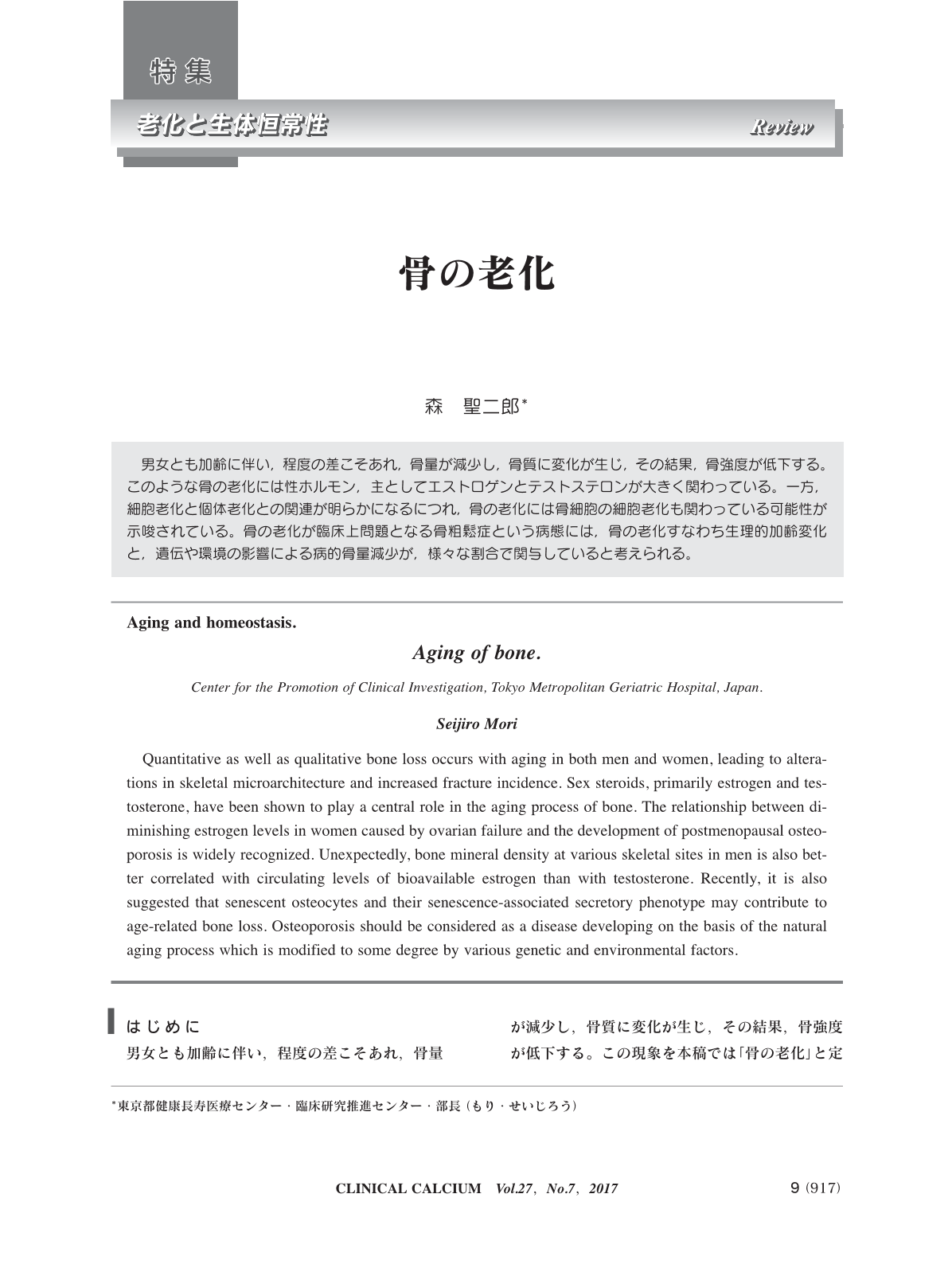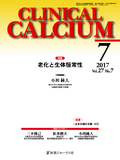Japanese
English
- 有料閲覧
- Abstract 文献概要
- 1ページ目 Look Inside
- 参考文献 Reference
男女とも加齢に伴い,程度の差こそあれ,骨量が減少し,骨質に変化が生じ,その結果,骨強度が低下する。このような骨の老化には性ホルモン,主としてエストロゲンとテストステロンが大きく関わっている。一方,細胞老化と個体老化との関連が明らかになるにつれ,骨の老化には骨細胞の細胞老化も関わっている可能性が示唆されている。骨の老化が臨床上問題となる骨粗鬆症という病態には,骨の老化すなわち生理的加齢変化と,遺伝や環境の影響による病的骨量減少が,様々な割合で関与していると考えられる。
Quantitative as well as qualitative bone loss occurs with aging in both men and women, leading to alterations in skeletal microarchitecture and increased fracture incidence. Sex steroids, primarily estrogen and testosterone, have been shown to play a central role in the aging process of bone. The relationship between diminishing estrogen levels in women caused by ovarian failure and the development of postmenopausal osteoporosis is widely recognized. Unexpectedly, bone mineral density at various skeletal sites in men is also better correlated with circulating levels of bioavailable estrogen than with testosterone. Recently, it is also suggested that senescent osteocytes and their senescence-associated secretory phenotype may contribute to age-related bone loss. Osteoporosis should be considered as a disease developing on the basis of the natural aging process which is modified to some degree by various genetic and environmental factors.



